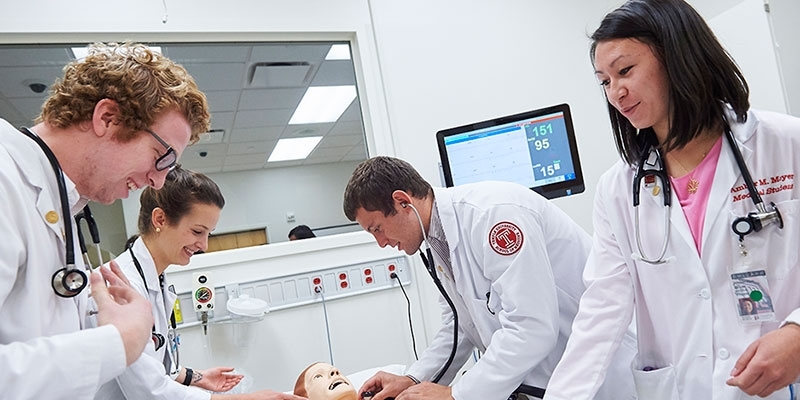Initiative targets health disparities by reducing salt in takeout food
The Healthy Chinese Takeout Initiative, launched by Temple’s Center for Asian Health, trains restaurant owners and chefs to reduce the amount of sodium in their food in hopes of decreasing hypertension among Philadelphians.

A citywide initiative spearheaded by a center in Temple’s Lewis Katz School of Medicine is taking aim at hypertension—one of the most serious health conditions afflicting Philadelphians at disproportionate rates—by helping to reduce sodium in food offered by some takeout restaurants.
The Healthy Chinese Takeout Initiative, launched in 2012, teaches restaurant owners and chefs how to cook with less sodium, explained Grace Ma, associate dean for health disparities and director of the Center for Asian Health at the Katz School of Medicine. The initiative is among a larger effort spearheaded by the center to reduce sodium consumption throughout the city, particularly in neighborhoods with the highest rates of sodium-related conditions, such as hypertension, or high blood pressure.
“Philadelphia has the highest prevalence of hypertension among large cities,” Ma said. “And overconsumption of sodium leads to hypertension.”
Hypertension disproportionately affects people residing in lower-income areas of the city, including swaths of North Philadelphia, South Philadelphia and West Philadelphia, where city data shows that rates are more than 10 percent higher than those in more affluent areas. Incidentally, Ma said, these neighborhoods also tend to have a high volume of Chinese takeout restaurants, which outnumber other fast-food restaurants by more than two-to-one across the city.

Grace Ma, associate dean for health disparities and director of the Center for Asian Health at the Lewis Katz School of Medicine, has been instrumental in ensuring the success of the Healthy Chinese Takeout Initiative and other programs aimed at addressing health disparities in underserved communities.
“There are more than 400 Chinese restaurants throughout the city that serve 9,000 customers daily and provide 3 million meals annually,” Ma said. “They are embedded in the corners of these neighborhoods, and they’re convenient, affordable and tasty. We want to make sure they serve community residents with healthy food that is in line with daily sodium intake and dietary guidelines set forth by the American Heart Association or Food and Drug Administration.”
In 2012, via a partnership with the Greater Philadelphia Chinese Restaurant Association and the Philadelphia Health Department, the Center for Asian Health began to host trainings for restaurant owners and chefs to teach them how to cook with less sodium by using alternative ingredients, such as healthier spices.
“In a taste test, customers couldn’t tell the food was prepared with less sodium,” Ma said.
To date, more than 200 restaurants have joined the initiative, and Ma said at follow-ups 36 months after the trainings, scientific analyses showed a nearly one-third reduction in sodium content of food—a change that could potentially lead to significant positive health effects.
“The restaurant owners are very excited,” said Steven Zhu, president of the Greater Philadelphia Chinese Restaurant Association. “They want to cook the right food for their customers.”
Zheng Jiang Chun, a vice president of the restaurant association who owns Ming Moon House on Allegheny Avenue in North Philadelphia’s Kensington neighborhood and Capital Beer on Cumberland Street in Fishtown, said he joined the initiative because he was concerned about his customers’ health.
“We want people to be able to get healthy, low-sodium food,” Zhu said.
Beyond restaurants, Temple’s Center for Asian Health has also worked with community leaders, including those at churches, to provide trainings on strategies to reduce sodium intake overall, such as healthier cooking at home and reading food labels before purchasing to check for sodium content. A healthy intake of sodium for adults is less than 2300 milligrams per day.
The next phase of the initiative, Ma said, is working with owners of Chinese buffet restaurants to reduce their use of sodium.
“This is multilevel, and we want to continue planning with the city to see where else we can intervene,” Ma said. “The ultimate goal is to reduce health disparities, reduce hospital admissions and encourage a healthy lifestyle to prevent chronic disease.”
Learn more about the Healthy Chinese Takeout Initiative and the Center for Asian Health.

